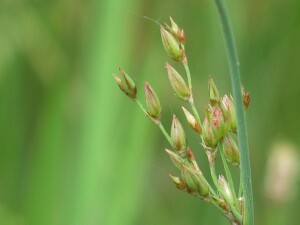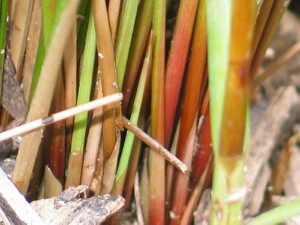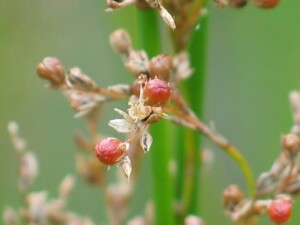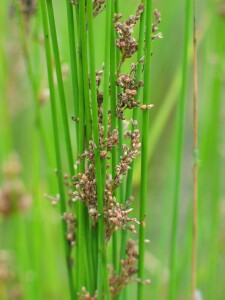Rushes
Back | Salinity Indicator Plants Home | Common name home | Scientific name home | Photo Gallery | Glossary
| Rushes photos |
| Scientific Name: | Juncus spp. | 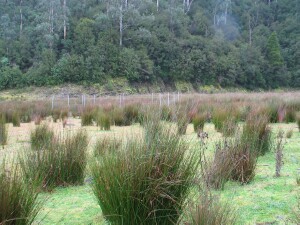 Stand of Green Rush Photo: A J Brown |
Status: | Both Australian native and introduced species. | |
Plant Description: | Tufted or rhizomatous perennials with smooth, hairless rounded stems that are sometimes hollow and sometimes contain pith. Leaves are mainly basal and can be flat but more often rounded and stem-like. In species where the leaves are reduced to small points, the leaf sheaths are referred to as cataphylls. Flower-heads are mainly branched clusters of individual flowers. Each flower consists of two whorls of three tepals (petal-like bracts) each surrounding the carpels and stamens. Fruit is a capsule containing 3 to many seeds. | |
Habitat: | Rushes are an indication of excessive wetness and often grow in poorly drained environments. They frequent river-banks, swampy ground, edges of lakes, drains, seepage slopes, depressions, drainage lines and floodplains. Most species are found in freshwater but some will grow in brackish waters while a few tolerate salinity. | |
Comments: | There are over 50 species of Rush in Victoria of which a third are introduced exotics. Rushes with salt-tolerance include Spiny Rush (Juncus acutus), Toad Rush (J. bufonius), Sea Rush (J. kraussii) and Giant Rush (J. ingens). Common and widespread, freshwater rushes include the native, Hoary Rush (J. radula), Finger Rush (J. subsecundus), Hollow Rush (J. amabilis), Yellow Rush (J. flavidus), Green Rush (J. gregiflorus), Tall Rush (J. procerus), Pallid Rush (J. pallidus), Loose-flower Rush (J. pauciflorus), Joint-leaf Rush (J. holoschoenus) and Broad-leaf Rush (J. planifolius) and the introduced, Jointed Rush (J. articularus) and Capitate Rush (J. capitatus). Rushes are similar to sedges in general appearance but differ in having rounded instead of triangular stems (although many sedges also have rounded stems) and having flowers made up of tepals, whereas each flower of a sedge has one bract only. | |
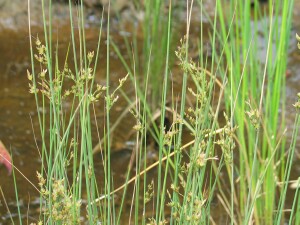 Hoary Rush plants Photo: A J Brown | 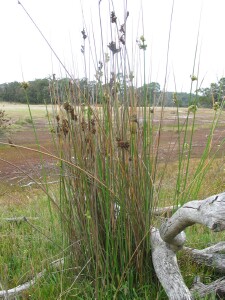 A typical Rush plant Photo: A J Brown |
|
|
|
|
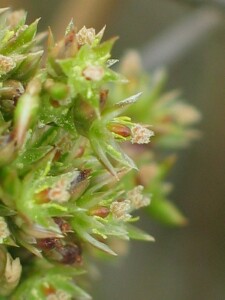 A rush in full flower Photo: A J Brown |

